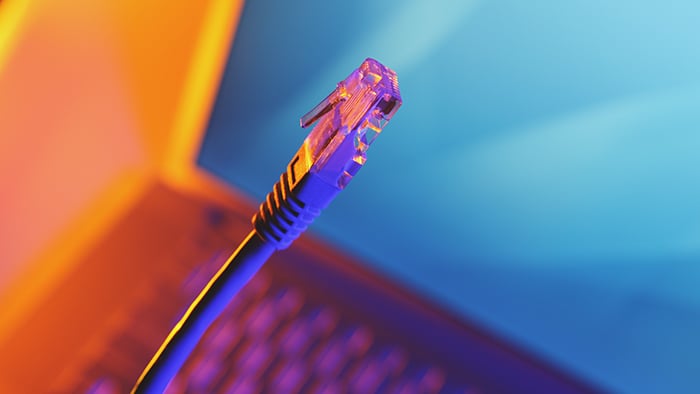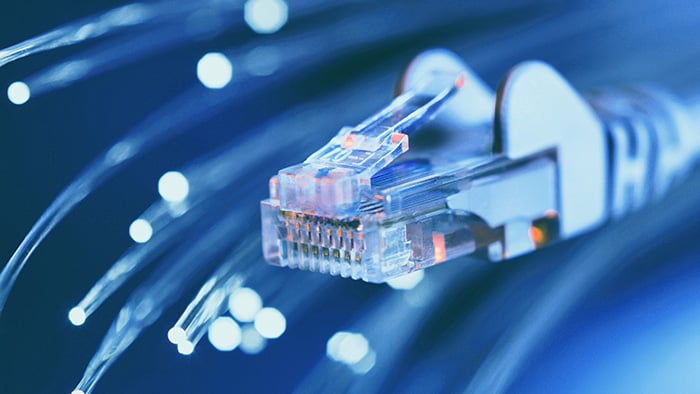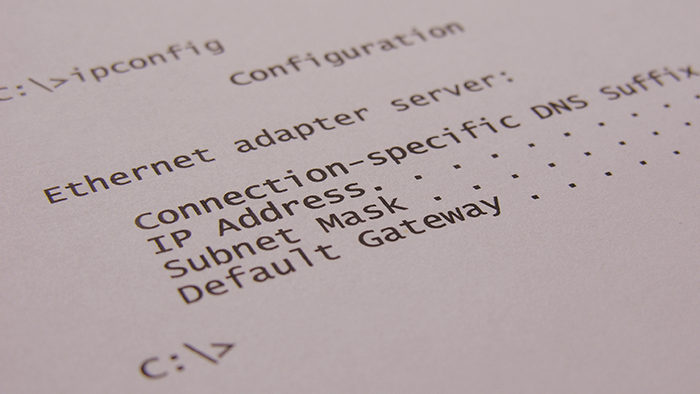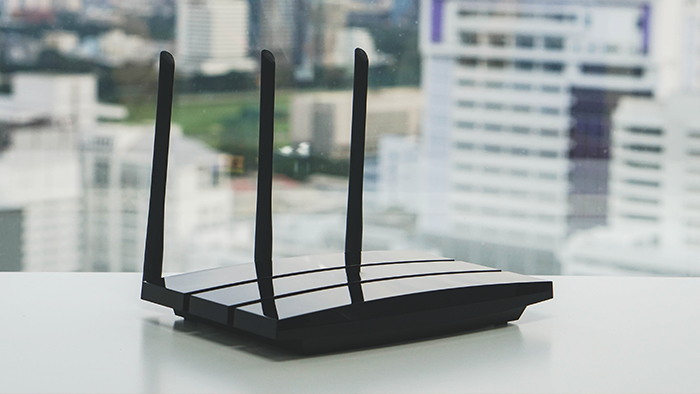- Security
- Privacy
- Performance
Just like people, it’s important for computers to have a common way to communicate with each other. Today most computers do this through TCP/IP. TCP/IP is typically built into computers and is largely automated, but it can be useful to understand the TCP/IP model, particularly when you’re setting up a computer to connect with other systems. This article explains how TCP/IP works.

TCP/IP stands for Transmission Control Protocol/Internet Protocol. TCP/IP is a set of standardized rules that allow computers to communicate on a network such as the internet.
By itself, an individual computer can perform any number of jobs. But computers’ real power shines when they communicate with each other. Many of the things we think about computers doing – whether it’s sending email messages, watching Netflix, or getting directions – involve computers communicating. These computers may be from different companies, or even located in different parts of the world – and the people and programs using them may use different human and computer languages.
Any given interaction may be between two computer systems, or it may involve hundreds of systems. But, like passing a letter or a package from hand to hand, each transaction occurs between just two computers at a time. For this to happen, the two computers need to know, ahead of time, how they are expected to communicate.
How do they start the conversation?
Whose turn is it to communicate?
How does each computer know its message was transmitted correctly?
How do they end the conversation?
Computers do this through protocols. A protocol is an agreed-upon set of rules. In human terms, we use social protocols to know how to behave and communicate with other people. Technologies have their own ways of setting communication rules, such as the telegraph using Morse code or a CB radio using codes like “10-4.”
It’s the same thing with computers, but with more hard-and-fast rules. When computers all use the same protocol, information can be transferred. When they don’t, it’s chaos.
Communication was more complicated when people first started to exchange information between computers. Each vendor had its own way of communicating between its own computers, but that didn’t enable communication with other vendors’ computers. It soon became clear that an agreed-upon standard was needed that permitted computers from all vendors to communicate with each other. And that standard is TCP/IP.
TCP and IP are two separate computer network protocols.
IP is the part that obtains the address to which data is sent. TCP is responsible for data delivery once that IP address has been found.
It's possible to separate them, but there isn’t really a point in making a difference between TCP and IP. Because they're so often used together, “TCP/IP” and the “TCP/IP model” are now recognized terminology.
Think of it this way: The IP address is like the phone number assigned to your smartphone. TCP is all the technology that makes the phone ring, and that enables you to talk to someone on another phone. They are different from one another, but they are also meaningless without one another.
TCP/IP was developed by the U.S. Department of Defense to specify how computers transfer data from one device to another. TCP/IP puts a lot of emphasis on accuracy, and it has several steps to ensure that data is correctly transmitted between the two computers.
Here’s one way it does that. If the system were to send the whole message in one piece, and if it were to encounter a problem, the whole message would have to be re-sent. Instead, TCP/IP breaks each message into packets, and those packets are then reassembled on the other end. In fact, each packet could take a different route to the other computer, if the first route is unavailable or congested.
In addition, TCP/IP divides the different communications tasks into layers. Each layer has a different function. Data goes through four individual layers before it is received on the other end (as explained in the following section). TCP/IP then goes through these layers in reverse order to reassemble the data and to present it to the recipient.
The purpose of the layers is to keep things standardized, without numerous hardware and software vendors having to manage communication on their own. It’s like driving a car: All the manufacturers agree on where the pedals are, so that’s something we can count on between cars. It also means that certain layers can be updated, such as to improve performance or security, without having to upgrade the entire thing.

TCP/IP is a datalink protocol that is used on the internet. Its model is split into four distinct layers. Used together, they can also be referred to as a suite of protocols.
The datalink layer (also called the link layer, network interface layer, or physical layer) is what handles the physical parts of sending and receiving data using the Ethernet cable, wireless network, network interface card, device driver in the computer, and so on.
The internet layer (also called the network layer) controls the movement of packets around the network.
The transport layer is what provides a reliable data connection between two devices. It divides the data in packets, acknowledges the packets that it has received from the other device, and makes sure that the other device acknowledges the packets it receives.
The application layer is the group of applications that require network communication. This is what the user typically interacts with, such as email and messaging. Because the lower layers handle the details of communication, the applications don’t need to concern themselves with this.
No. When the packets are being transmitted between computers, they are vulnerable to being seen by others. That’s one reason why you are advised to avoid public Wi-Fi networks when sending data that must stay private, and to use encryption.
If this is something you are concerned about – for example, if you’re sending personally identifiable information or financial information – you can encrypt your data using a virtual private network (VPN).
A VPN is the best way to ensure your data is effectively encrypted and packets are protected as they travel between networks. You can set up a VPN manually, or better yet, try Avast SecureLine VPN for free.
There are several kinds of IP addresses. But whatever type of IP address you employ, it uses TCP/IP.
The differences between types of IP addressing are transparent to you as a casual user – and the fact that you don’t need to know much about it is among TCP/IP’s strengths. Usually these matters are managed by whoever sets up your computer operating system or mobile device. But for clarity:
Static IP addresses stay the same all the time. They are like the fixed address on your house, an unchanging address.
Dynamic IP addresses change, or at least they are designed to change. When a computer system uses a dynamic IP address, it announces, “This is where you can find me!” to the local network – rather like the “address” of a hotel room, where the hotel knows how to find you. To learn more about this distinction, see Static vs. dynamic IP addresses.
You may have heard of cities where the population is growing so quickly that they’ve had to create new area codes so new arrivals could get telephone numbers. With the ever-increasing number of connected devices, TCP/IP had a similar problem -- the internet was basically running out of IP addresses. So a new version of IP address called IPv6 was developed as an alternative to the existing IPv4 addresses. Here’s a more in-depth look at the differences between IPv4 vs. IPv6 addresses.
TCP/IP is the most commonly used protocol suite on the web. Millions of people use it every day, even if they don't realize it.
On the vast majority of computers, TCP/IP is built-in as standard. You don't need to do anything to set it up manually. Occasionally, you may need to tell an application what your TCP/IP address is.
On some occasions, you might want to hide your IP address, usually for security reasons.
Each device has its own TCP/IP address. Usually the device can communicate automatically, but sometimes you need to manually provide your TCP/IP address. How you go about finding your IP address depends on your operating system.
Protecting your IP address is important. It’s like your phone number; you don’t necessarily need to hide it from everyone, but you don’t want to shout the number in public either.
Avast SecureLine VPN keeps your IP address private and encrypts your data when it’s being transmitted, giving you an extra layer of security.
Avast SecureLine VPN for iOS protects your IP address, encrypts your data during transmission, and makes your connection private and secure.
Avast SecureLine VPN for Windows protects your IP address, encrypts your internet traffic, and makes your connection private and secure.
Avast SecureLine VPN for Mac protects your IP address, encrypts your data during transmission, and makes your connection private and secure.
Avast SecureLine VPN for Android protects your IP address, encrypts your data during transmission, and makes your connection private and secure.










Connect privately on your Android with Avast SecureLine VPN
Avast
SecureLine VPN
Connect privately on your iPhone with Avast SecureLine VPN
Avast
SecureLine VPN